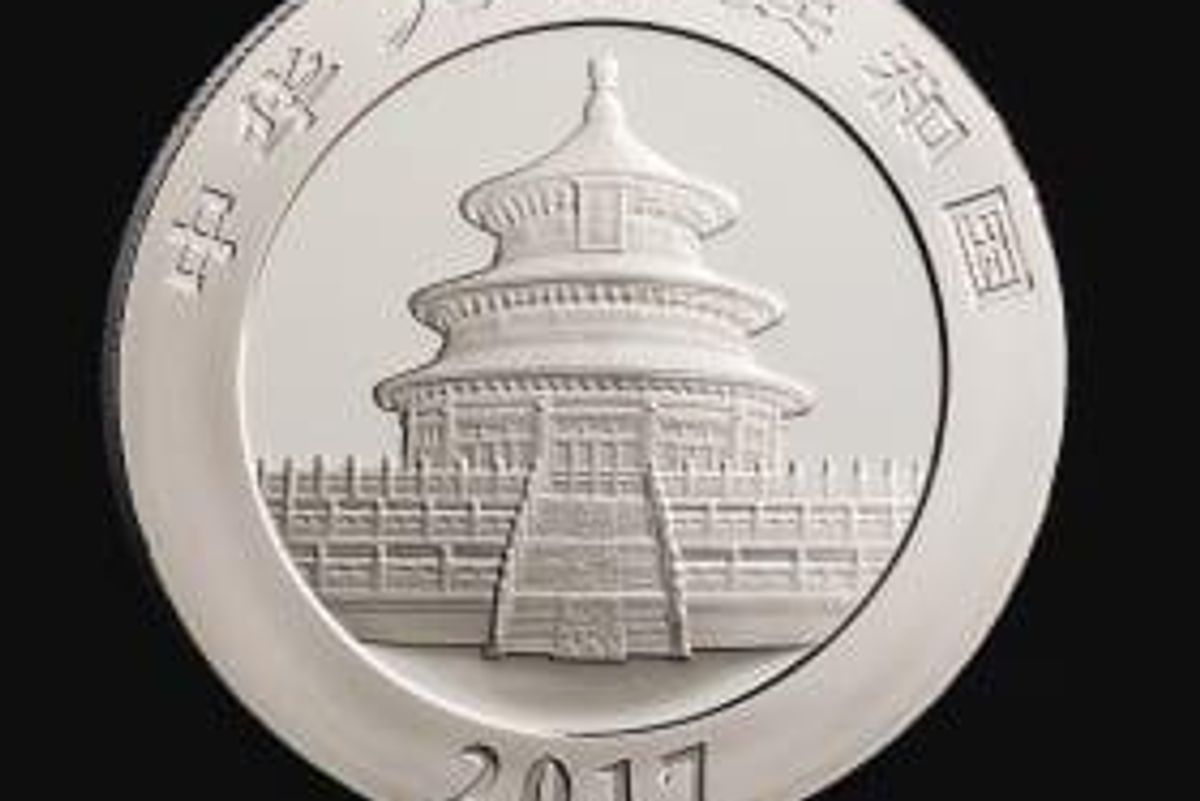China’s Mining Industry: An Open Opportunity for Investors

Recognizing the importance of foreign investment to reaching its economic goals, China is revamping its mining industry to attract foreign companies.
In 1978, China set out to gain a stronger foothold in the global economy by reshaping its economic policies toward a more open investment climate. Over the four decades since their introduction, China’s “reform and opening-up” policies have transformed the nation into a global powerhouse.
Today, the country is the world’s second-largest economy, largest manufacturing nation and a major force in the global resource industry. With a population of 1.3 billion people and an extensive industrialization and infrastructure development program, China leads the world in the consumption of metals and minerals. Around 40 percent of resources mined around the world eventually end up in China.
The adoption of the initial Mineral Resources Law in 1986 and the opening of the market to private investors have both led to the modernization of China’s domestic mining industry over the last 30 years. China is now a major producer of more than 20 of the world’s most important resource commodities, including coal, gold and most rare earths. China’s mineral reserves are diverse and extensive, consisting of the largest portion of global reserves for molybdenum, titanium, tungsten and rare earths.
In November 2015, the government of China released its 13th five-year plan (2016-2020) for the economy, which underscores a transition from a manufacturing-based economy to a service-based economy. In its annual review on global trends in the mining industry, PwC reports that although this transition will decrease China’s demand for raw commodities, China will continue to be a major player in the global mining industry.
Mr. Yikang Liu, a former deputy general secretary of the China Mining Association and former vice-chairman of the Geological Society of China, has confirmed that sentiment. He told the Investing News Network that although China is completing the industrialization phase of its economic build out, mining will continue to play a critical role in the nation’s economy.
“The total consumption for minerals will still be very large. Many minerals, such as iron ore, will soon cross the highest consumption point. In China’s economy, the important status of mining will not change,” said Mr. Liu, who was the chief geologist for the former Ministry of Metallurgical Industry of China, where he made significant contributions to China’s most current (1997) Mineral Resources Law.
Foreign investment welcome in China’s mining sector
Since the launch of the “reform and opening-up” economic policies in 1978, China has attracted more than $1.7 trillion in foreign investment. The Asia Pacific Foundation of Canada says that “China has become one of the top three destinations for foreign investment since 2008, with a total inward foreign investment of US$126 [billion] in 2016.”
China first allowed foreign investment in resource exploration and mining in 1993. The revised Mineral Resources Law in 1997 further enabled foreign companies to establish joint ventures with Chinese companies that hold exploration licenses. One huge plus for foreign miners is China’s transparent, straightforward permitting process. Sino-foreign joint venture companies can secure exploration permits following the completion of necessary geological reports. Reserve calculations are completed by a certified Chinese mining engineering firm prior to the issuance of mining permits.
China ranks as the top mining jurisdiction for the whole of Asia, according to the Fraser Institute 2016 Mining Survey of the most attractive mining jurisdiction in the world. China’s taxation regime on mining projects compares favorably with some of the world’s top jurisdictions. Companies pay a 3-percent resource tax to the government as a royalty, along with a 25-percent income tax and a 17-percent value-added tax on sales of concentrates. Ranking 54th out of a total of 104 mining jurisdictions in the 2016 survey, China obviously has some room for improvement on the global stage, but its increasingly open economic reforms are paving the way forward.
China recognizes the importance of foreign investment to reaching its economic goals, and has been working over the past decade to redevelop its mining legislation to attract foreign companies.
China’s new open-door policy
China will “keep its door wide open and not close it” — President Xi Jinping
In 2017, China has made further policy moves toward opening the country to foreign investment in a number of sectors, including mining. Speaking at the World Economic Forum in Davos in January, Chinese President Xi Jinping said that the government will “expand market access for foreign investors … strengthen protection of property rights, and level the playing field to make China’s market more transparent and better regulated.” Over the next five years, he said, China expects to bring in $600 billion in foreign investment.
The same day that President Jinping gave his speech, Chinese Premier Li Keqiang signed a notice issued from China’s State Council entitled, “Circular Concerning Measures on Further Opening up and Actively Utilizing Foreign Investment.” The notice spells out the new measures China will take to further open up its economy, improve the business climate in the country and encourage foreign investment.
One of the measures outlined by the State Council, revising the Catalogue for the Guidance of Industries for Foreign Investment, was completed in July 2017. The newly updated document cut the number of restrictions on foreign investment from 93 to 62, further opening access to China’s services, manufacturing and mining sectors.
Specific changes for the mining sector include relaxing restrictions on Foreign Direct Investment in the development of non-conventional oil and gas resources; the exploration and mining of precious metals; lithium mining and mineral processing; and the smelting of rare metals, tungsten, molybdenum, tin and antimony.
More economic reform policies may be announced following the 19th Party Congress in Beijing in the fall of 2017. “We are going to send a strong signal: China will continue to actively attract foreign investment, and will take further steps to deepen the reform and unswervingly open China wider to the rest of the world,” said Premier Keqiang.
Political risk in China lower than investors may think
A mining jurisdiction’s political risk is a significant factor in determining its attractiveness as an investment destination, and investor confidence in China’s geopolitical climate has historically been apprehensive at best. However, since the country began opening the door to foreign investment in 1978, there have been no incidences of expropriation of foreign assets in China. And the nation’s business environment is expected to become more aligned with international practises as the economy develops further.
The first Chinese representative to attend the annual Prospectors & Developers Association of Canada (PDAC) conference, Mr. Liu gave a speech in 1995 on the investment opportunities in China’s mineral resources. “At that time, my Canadian colleagues did not understand China. After the speech, the question raised to me the most concerned the political risk of China,” said Liu. “Over the past 22 years since my speech at the PDAC, China has now become the second-largest economy in the world. The quality of Chinese people’s living standards has significantly improved. China’s social and political stability have been further strengthened throughout the country.”
One issue that gives pause for sustainability-minded investors is the perceived lack of consideration for environmental protections in China. However, Liu said that “environmental protection has become a basic state policy in China,” which has strengthened its commitment to building an “ecological civilization” by adhering to green development concepts and has “carried out the most stringent environmental remediation” in the country’s history. “The Chinese government will continue to promote green mine strategies in the mining industry,” he added.
Investors may still understandably exercise caution when it comes to considering China-based mining companies, but Liu countered that both favorable and unfavorable factors for investing in mining exist in countries across the globe, and China is no different.
“The key to success in operating mines in China is to foster strengths, circumvent weakness and capitalize on favorable conditions and return investments to the investors,” said Liu, who serves as a director of Silvercorp Metals (TSX:SVM,NYSEAMERICAN:SVM), China’s largest primary silver producer. The TSX/NYSE American-listed Canadian miner has successfully operated in China for 12 years.
“As long as a mining company receives high-quality mining rights, seriously abides by state laws and regulations, implements strict mine management, uses advanced mining technology and is committed to a high level of social responsibility to local communities, then this company will have stable production and profitability in China,” said Liu.
Silvercorp’s business model is focused on quickly advancing production. “This way you can share all the benefits with the local people, local community, local government, tax revenue,” said Silvercorp Chairman and CEO Rui Feng. “Then we can finance our own exploration efforts.”
According to Feng, Silvercorp built the Ying Mining District with only $5 million from Silvercorp shareholders. “Over the last 11 years, Silvercorp has received dividends of approximately US$280 million from the Ying Mining District profit,” he added. “Over that time we produced approximately 52.6 million ounces of silver and approximately 773 million pounds of lead–zinc, and we still have a mine life of 20 years.”
This INNspired article was originally published by the Investing News Network in 2017.
This article was written according to INN editorial standards to educate investors.



